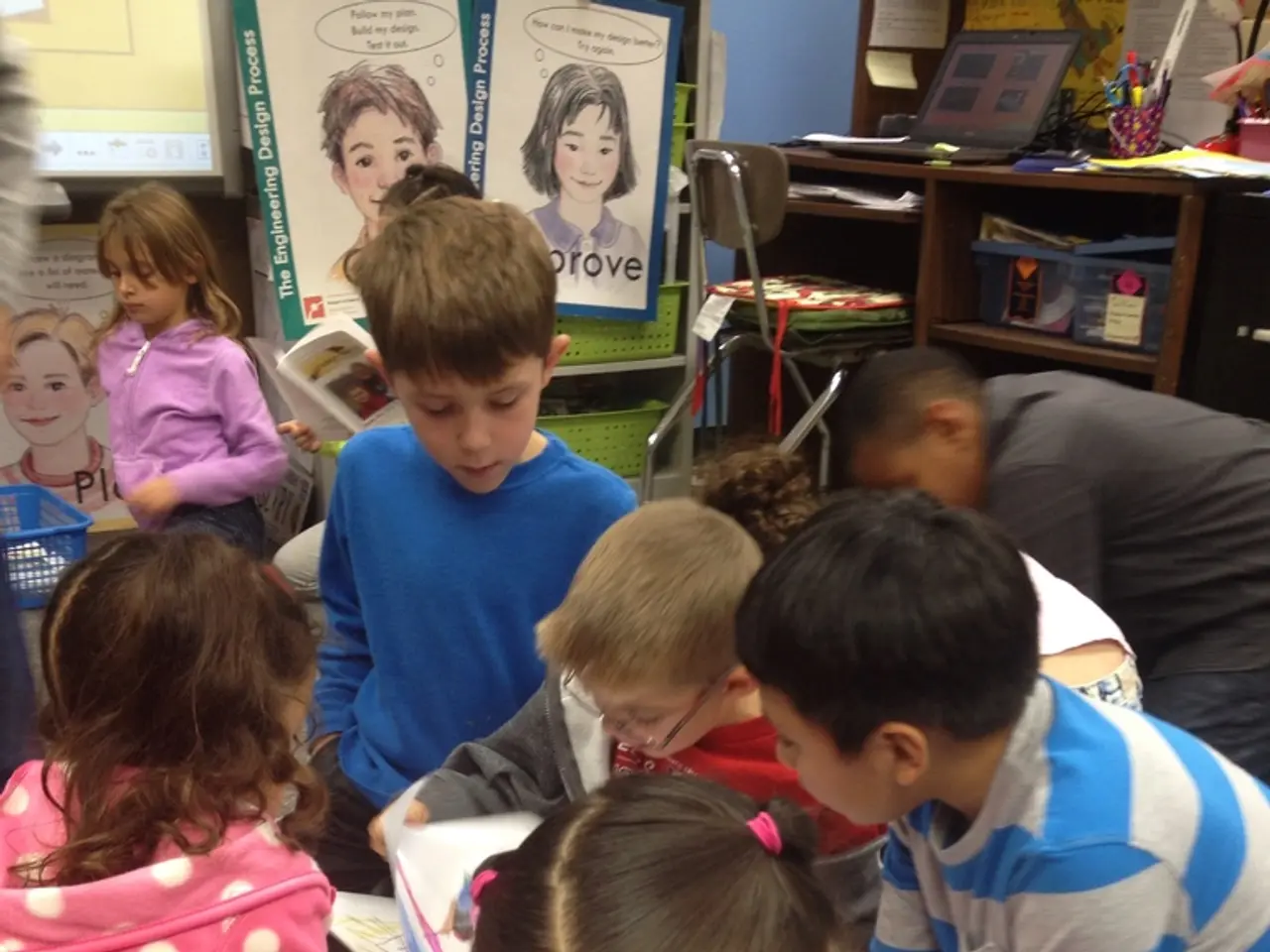Investigating Educational Approaches Based on Mistakes at Children's Museum
Children's museums across the globe are revolutionising the way young minds learn and grow, with a focus on productive failure as a key ingredient in learning. This approach, supported by research from esteemed institutions such as Stanford University, Harvard Center on the Developing Child, the American Psychological Association (APA), and the LEGO Foundation, among others, encourages children to engage deeply with challenging tasks just beyond their current abilities.
At the heart of this educational philosophy lies Museo dei Bambini, a children's museum in Italy that invites children to explore, experiment, and fail. This low-stakes, high-choice environment, with no grades, no scripts, and no pressure to perform, is built on trust, valuing the child's ability to learn through experience and the process of play as serious intellectual work.
This method, often referred to as productive failure, promotes cognitive development and resilience in children's learning environments. By engaging with challenging tasks, children activate critical brain regions like the prefrontal cortex, supporting executive functions, problem-solving, and decision-making. During productive struggle, neural processes such as effortful retrieval, memory formation, and myelination occur, strengthening neural pathways through repetition.
Moreover, dopamine release during these challenges reinforces persistence and motivation, key for continued learning and resilience. Productive failure helps children learn that setbacks are a natural part of the learning process, fostering a mindset that views obstacles as opportunities for growth rather than signs of inadequacy.
In environments like Museo dei Bambini that emphasise hands-on, inquiry-based learning, children experiment, make mistakes, and learn through trial and error. These experiences develop relational intelligence—the integration of emotional, intellectual, and physical capacities—helping children manage anxiety, conflict, and risk-taking more effectively.
Supportive contexts, including guidance from adults and peer collaboration, amplify the benefits of productive failure by providing scaffolding and social-emotional support that helps children recover from setbacks and continue learning. This relational support encourages vulnerability and risk-taking without fear of negative judgment, essential for internalising productive failure’s benefits.
The lessons of the museum don't have to end at the exit. Parents and caregivers can apply the museum's approach to learning at home by encouraging healthy risk-taking and learning from failure, valuing the process over the product, asking reflective questions, sharing their own mistakes, creating time and space for open-ended play, and welcoming mistakes as learning moments.
Unlike schools, children's museums do not emphasise right answers or time limits, allowing children to move at their own pace and revisit challenges as many times as they like. Stanford professor Manu Kapur's research shows that students who struggle initially often outperform those who are taught solutions right away. Failure, experienced in a safe, supportive environment, is one of the most powerful drivers of cognitive development.
In early childhood, learning through failure helps in developing executive functions such as working memory, inhibitory control, and cognitive flexibility. Parents often notice their children's persistence when failure is framed as part of the fun. Children's museums provide a safe, shared, and curious environment for failure, unlike traditional educational settings where failure may be associated with shame.
These museums are multisensory and hands-on, supporting learning across developmental stages and styles. Exhibits like the Domino Drop and Cause & Effect encourage early engineering, physics, and emotional regulation, teaching children problem-solving skills through repeated failures. The theory of constructivism developed by Jean Piaget suggests that children build knowledge through active engagement with their environment, a philosophy that is at the core of children's museums' educational approach.
In conclusion, productive failure in child-centered learning environments promotes cognitive growth by strengthening brain function related to problem-solving and memory while also enhancing resilience by normalising failure as part of learning. These processes build children's confidence, motivation, and social-emotional skills critical for lifelong learning. Failure is not a flaw in learning—it's a feature, and children's museums allow kids to discover their own power to persist, adapt, and grow.
- The Children's Museum in Puglia, Italy, known as Museo dei Bambini, advocates a lifestyle that encourages educational-and-self-development with an emphasis on home-and-garden, learning by allowing children to explore, experiment, and even fail, reflecting the philosophy of productive failure.
- Parents can foster an environment for their children's learning at home by adopting the museum's approach, focusing on the importance of learning from failure, valuing the process over the product, and encouraging healthy risk-taking.
- Inspired by theories like constructivism, children's museums, such as the children's museums in Puglia and beyond, create multisensory, hands-on experiences that nurture learning across different developmental stages and styles, even extending to education-and-self-development areas like engineering and physics.




